Higher classification Mangifera | Genus Mangifera Rank Species | |
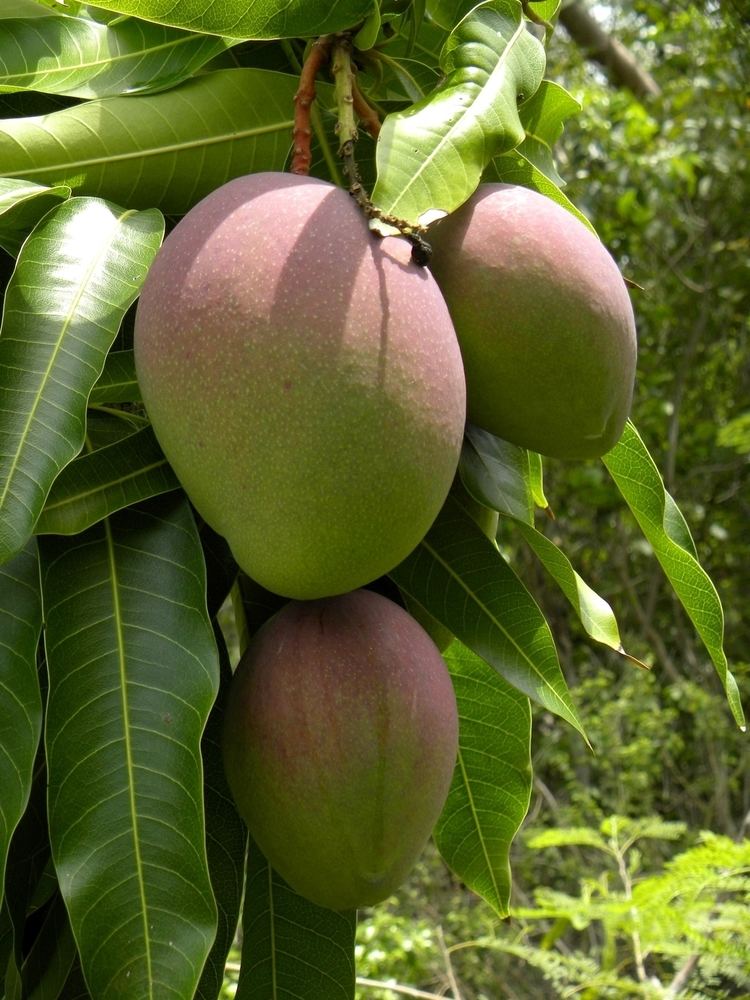 | ||
Lower classifications Keitt, Ataulfo, Sensation | ||
Plant files mango mangifera indica
Mangifera indica, commonly known as mango, is a species of flowering plant in the sumac and poison ivy family Anacardiaceae. It is found in the wild in Bangladesh, India and Pakistan where it is indigenous and cultivated varieties have been introduced to other warm regions of the world. It is a large fruit-tree, capable of a growing to a height and crown width of about 100 feet and trunk circumference of more than twelve feet.
Contents
- Plant files mango mangifera indica
- Mangifera indica
- Chemical constituents
- Traditional medicine
- Wood
- In culture
- References
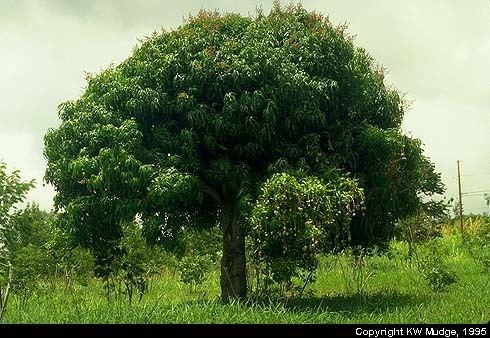
The species appears to have been domesticated in India at around 2000 BC. The species was brought to East Asia around 400-500 BCE from India; next, in the 15th century to the Philippines; and then, in the 16th century to Africa and Brazil by the Portuguese. The species was described for science by Linnaeus in 1753.
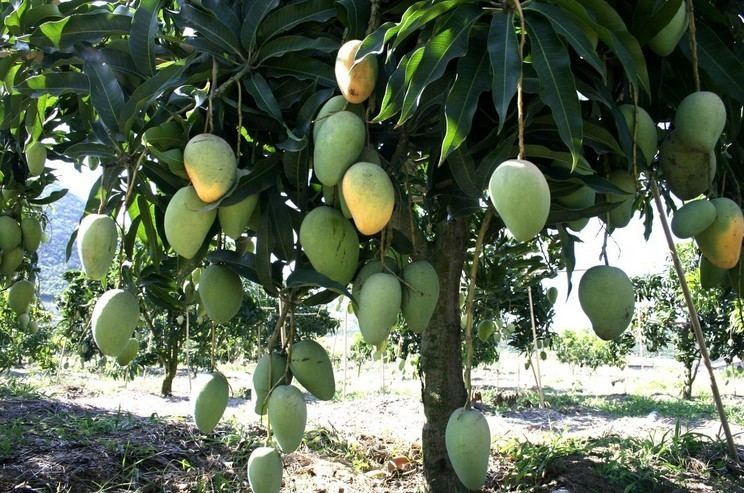
Mango is the National fruit of India, Pakistan and the Philippines. The Mango tree is the national tree of Bangladesh. It finds mention in the songs of 4th century CE Sanskrit poet Kalidasa. Prior to that, it is believed to have been tasted by Alexander (4th century BCE) and Chinese pilgrim Hieun Tsang (7th century CE). Later in 16th century Mughal Emperor, Akbar planted 100,000 mango trees in Darbhanga, Bihar at a place now known as Lakhi Bagh.
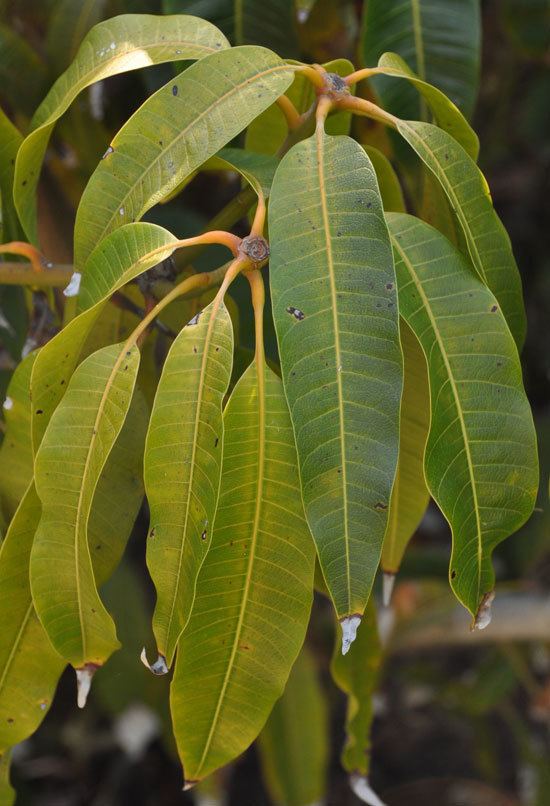
Mangifera indica
Chemical constituents

Mangiferin (a pharmacologically active hydroxylated xanthone C-glycoside) is extracted from mango at high concentrations from the young leaves (172 g/kg), bark (107 g/kg), and from old leaves (94 g/kg). Allergenic urushiols are present in the fruit peel and can trigger contact dermatitis in sensitised individuals. This reaction is more likely to occur in people who have been exposed to other plants from the Anacardiaceae family, such as poison oak and poison ivy, which are widespread in the United States.
Traditional medicine
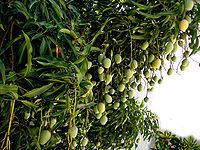
In Ayurveda, it is used in a Rasayana formula sometimes with other mild sours and shatavari (Asparagus racemosus) and guduchi (Tinospora cordifolia). In this oriental system of traditional medicine, varied properties are attributed to different parts of the mango tree, both as food and medicine.

Extracts of the bark, leaves, stems, and unripe fruits have demonstrated antibiotic properties in vitro, and are used in traditional medicine.
Wood
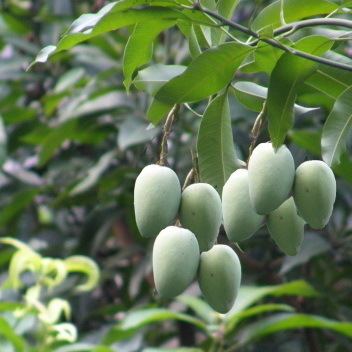
The tree is more known for its fruit rather than for its lumber. However, mango trees can be converted to lumber once their fruit bearing lifespan has finished. The wood is susceptible to damage from fungi and insects. The wood is used for musical instruments such as ukuleles, plywood and low-cost furniture. The wood is also known to produce phenolic substances that can cause contact dermatitis.
In culture
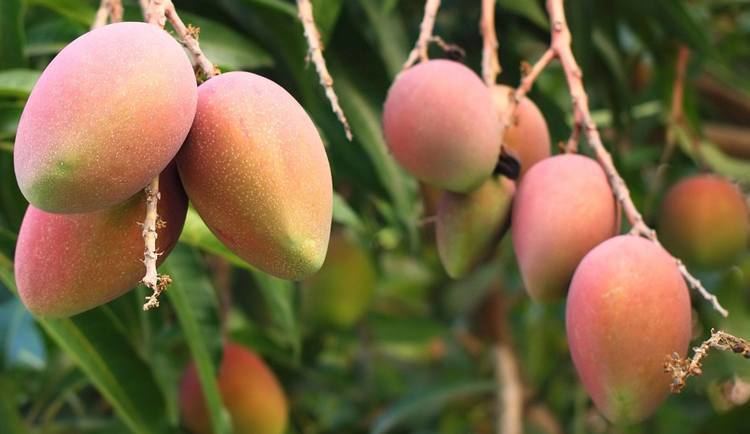
In Theravada Buddhism, mango is said to have used as the tree for achieved enlightenment, or Bodhi by twenty third Lord Buddha called "Sikhi - සිඛි". The plant is known as අඹ (Ambha) in Sinhala.
Author Pablo Antonio Cuadra, created a narrative of the Mango in Nicaragua; "the mango that arrived in Nicaragua from distant Hindustan.", a single sapling that was placed on a ship in Hindustan and planted in a garden in Granada. Nicaragua is known for its many mangos.
Rivas, Nicaragua is known as "La Ciudad de Los Mangos", which translates to the "City of Mangoes".
